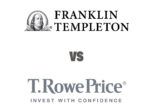The past two years have been unique for synchronised global economic growth across geographies and sectors. While some markets, such as China, were more volatile than others, in general volatility declined to historically low levels, before the market correction in early February boosted it to levels consistent with the long-term average.
FSA took a look at correlations among fund categories during the past three years and found that diversifying a portfolio to reduce risk using different categories was not easy.
Virtually all 53 categories of funds, as defined by FE and available to Hong Kong investors, exhibited positive correlations with one another. A positive correlation means that the average returns delivered by funds in two categories tend to move in the same direction. The higher the number, the closer the resemblance. A correlation of one means that the returns were identical.
A negative correlation means that when one category goes up, the other tends to come down. Including asset classes with negative (or low) correlations is a tool asset managers use to ease the volatility of their portfolios.
As a general rule, the returns of fixed income investments exhibit negative correlation with those of equities.
In the unusual markets of the past three years, however, the rules did not appear to hold. While correlations among paired fixed income and equity categories tended to be lower than correlation within asset classes, virtually all were positive. The only category that was negatively correlated with others was US dollar money market funds, which can only be explained by relative currency movements.
The six most popular equity fund categories, which account for 623 funds, proved to be highly correlated.
The only two categories that would provide some diversification were China, India and Latin America equities, whose correlations with the others were comparatively low, in particular with North American and European equities.
Outside equities, commodity funds showed low, albeit still positive correlation of returns with many other categories.
North American equity funds are highly correlated with global equity funds, which implies that the latter carry a high exposure to the US. Similarly, emerging market equity funds tend to have high exposure to Asia-Pacific, so their high correlation with Apac ex-Japan equity funds is not surprising.
The biggest category in the Hong Kong mutual fund universe, global mixed-asset funds, showed a significantly high correlation to most other categories, with the highest to global equity funds and Apac ex-Japan funds.
Fund sector correlations
The closer to 1, the more correlated. A negative or low number is desirable for diversification


















